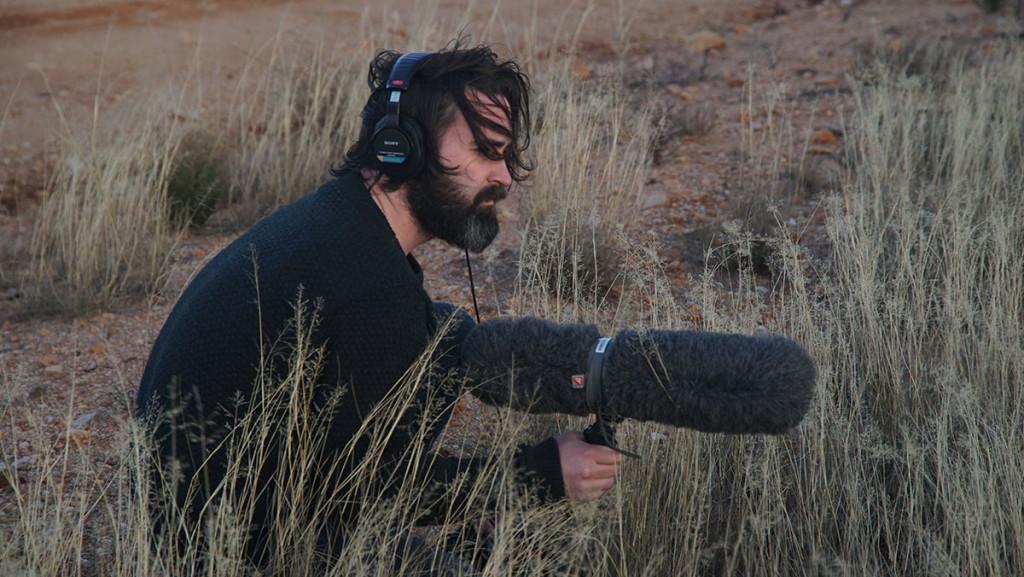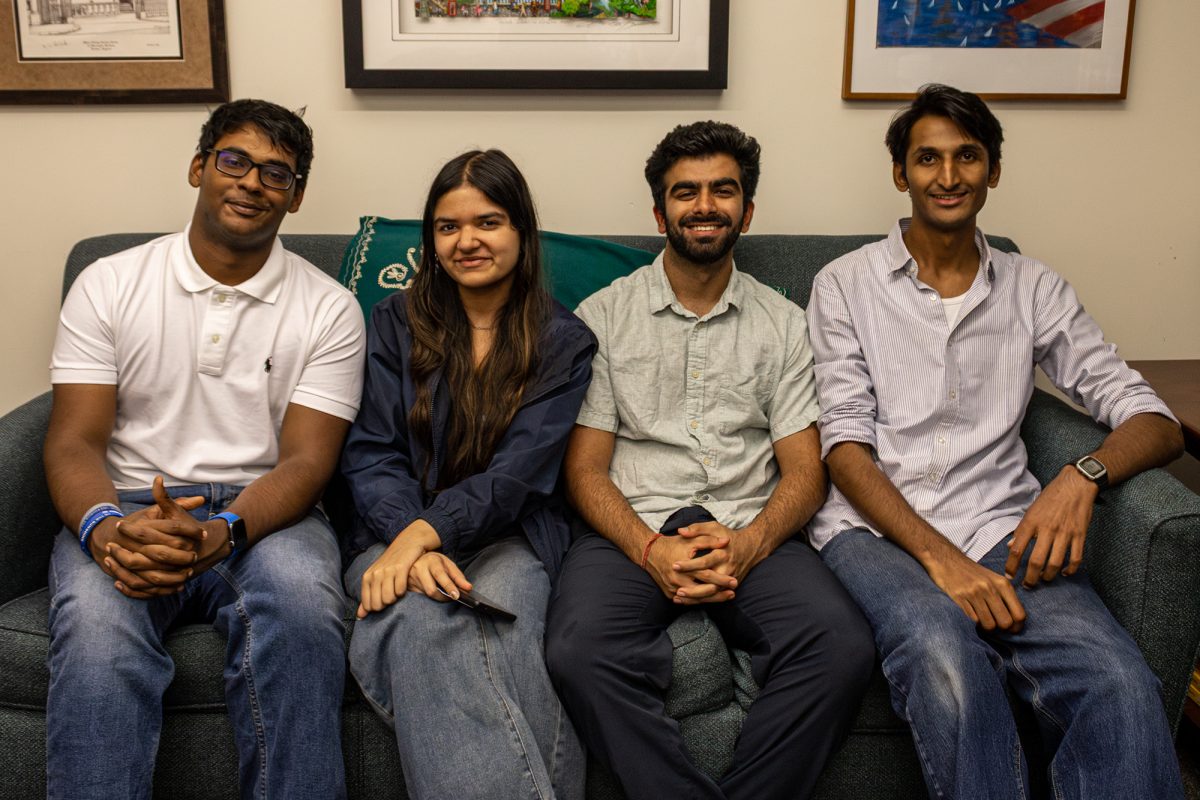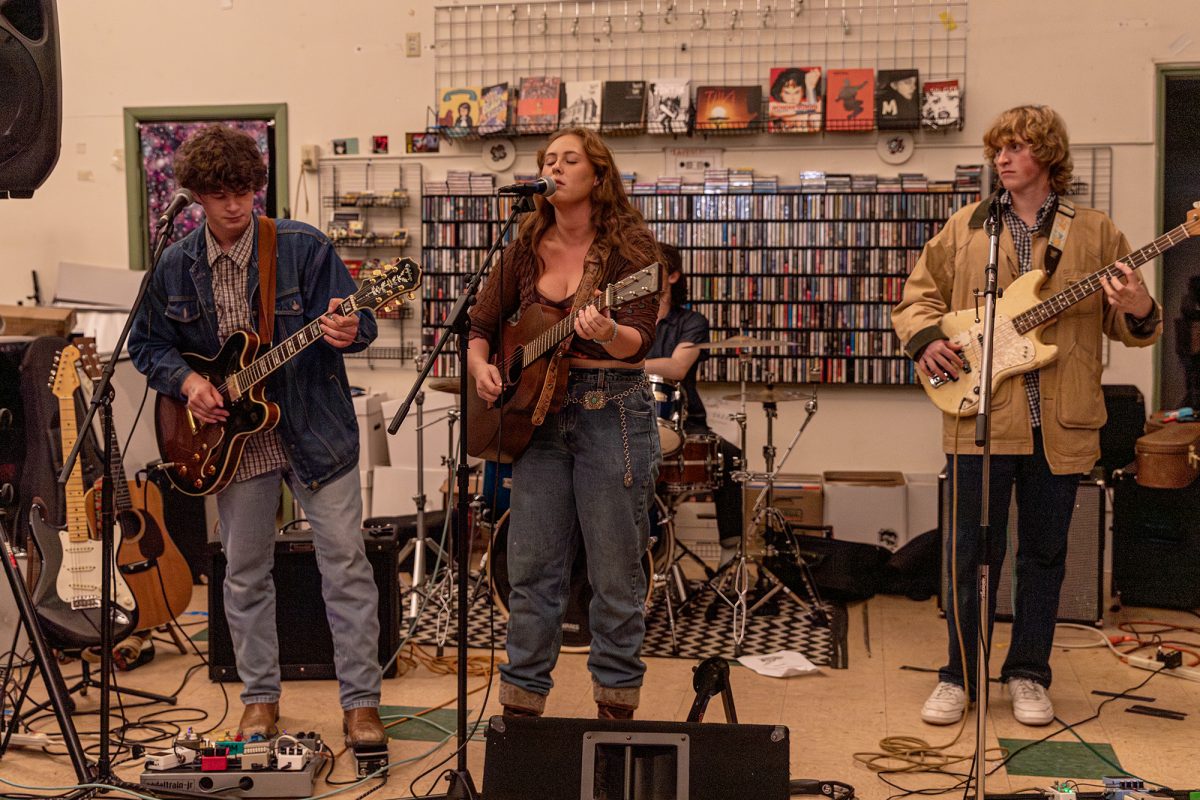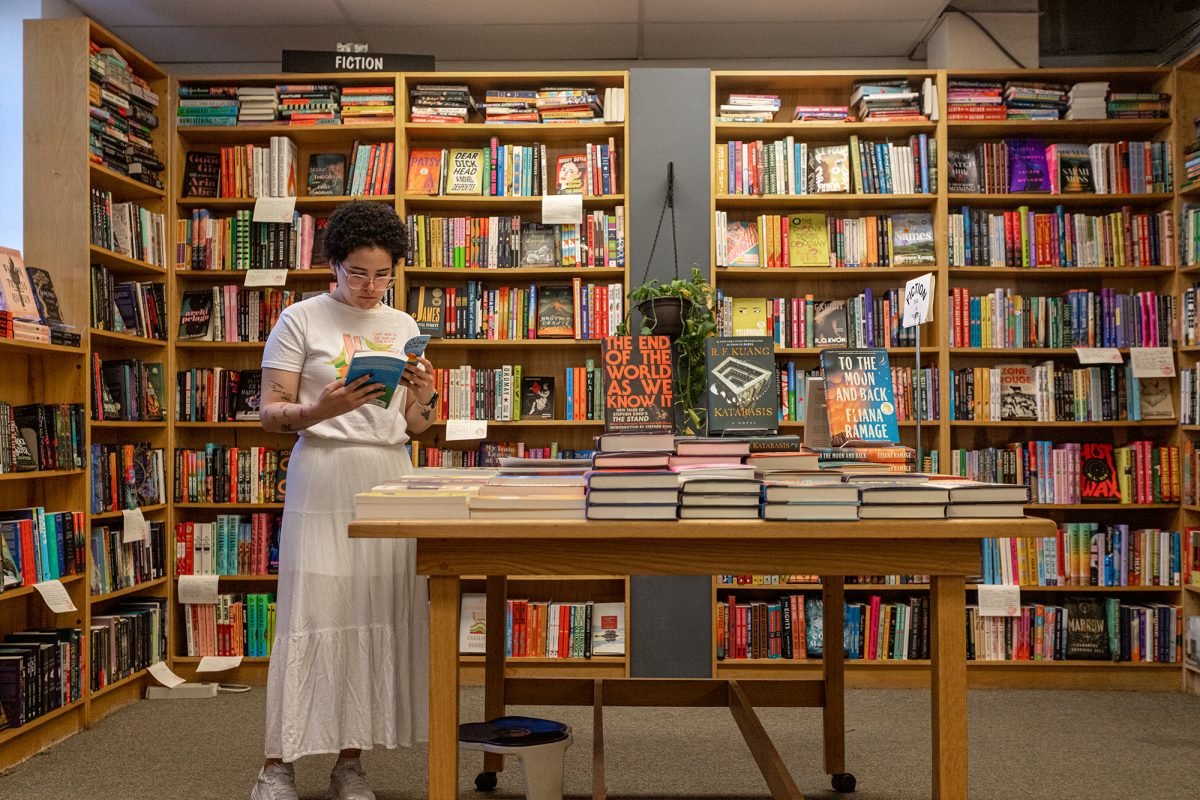Joshua Bonnetta is an assistant professor of media arts, sciences and studies in the Roy H. Park School of Communications. His creative work in film, video and sound has been featured at the Berlinale, Toronto International Film Festival, European Media Arts Festival, Images Festival, Mutek International Festival of Electronic Music and Rotterdam International Film Festival. Recorded on site at the Salton Sea in the California desert, his latest LP is titled “Lago” and was created to accompany a photo book by former Ithaca College professor Ron Jude. Bonnetta has recorded two other albums: “American Colour” in 2012 and “Strange Lines and Distances” in 2014.
Bonetta said his latest album “explores the acoustic ecology of the area in and around the Salton Sea.”
Staff Writer Justin Henry discussed the album with Bonnetta, its distinct qualities and the 29-week process that went into its creation.
Justin Henry: Can you go into what the process was like?
Joshua Bonnetta: The other artist, Ron, the photographer, he took me around to these various places that he had taken photos of over five years, so of course he couldn’t always remember the exact places, but some places were new that we found. We basically traced his process, and I went back to these places, and I recorded sound from the environment with whatever I could find in that space. And then the editing process — that took place over the course of a year. That was putting the pieces together and constructing a loose narrative based around the photos and then my experience of doing the recording.
JH: UK magazine The Wire Magazine described the album as the following: “These recordings fall somewhere between fact and fiction, between documentary journalism and imagined aural environments.” Can you unpack that and explain those dual concepts of “documentary journalism” and “aural environments”?
JB: It’s based on field recordings that are site specific and represent that environment and in a particular way. It represents the acoustic ecology of that particular place. In that sense, it does have a documentary feel to it, but I also work creatively with a lot of the processing of these sounds, like with analogue processing, and I abstract the sounds and expand the sounds and manipulate them, and in that sense, there is an element of fiction to that. I was trying to change the sound so that they would align more with my experience and the feeling of what I got from that place, and in that sense, it is more fiction.
JH: Why did you decide to use analogue processing?
JB: I’m drawn to analogue processing, like with the tape-based processing, because of the physicality of it. The physicality of it invites a certain corruptibility; it allows for chance, a kind of different reaction. When you’re actually manipulating something with your hands, I think you work with it in a different way, and I think it invites a certain interaction with the work that digital doesn’t allow for. I used these microphones to do the location recordings, but one of the microphones that I use are these contact microphones or piezo microphones, and they’re microphones that capture sound through vibration. A lot of the sounds are taken from physical materials themselves, like the sounds of different plants in the desert, the sounds of sense, of architectural ruins, material, stuff like that. Sounds that you normally wouldn’t hear, but when you put the microphones against the surfaces, it picks up their inner vibrations.
JH: Where do your titles come from?
JB: So the first title on the A side, “Everything that was Ever Something,” that comes from a direct quote from the interview. There’s this interview with this man. He’s talking about how his home had been burned down by an arsonist and within his home all the personal artifacts he had: you know, photos and letters, and not only that but his dogs and his birds. It was his mother’s home. All of this is destroyed in the fire, and he mentions how “everything that was ever something for us was lost.” That for me was particularly powerful, in talking and sharing the story. That seemed like the right title for that piece. And then the second piece, “What Lies in It,” comes from an essay. It’s on phenomenology by Edmund Husserl, who’s talking about the impossibility of encountering a place or encountering the present without the influence of the past shaping that encounter. I had been reading this at the time I was working on the project, and it just seemed in all the places I was recording, it was impossible to encounter these places without the influence of the past shaping my encounter around that whether that’s my own personal history or the history of that place in particular.














